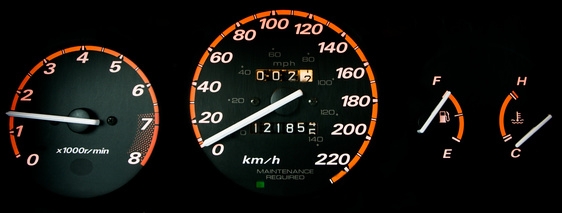
Engines are complex and some components are hard to reach. Troubleshooting problems can be difficult, especially if you are dealing with an older Ford F-150 pickup truck that has had many years of wear and tear. One method focuses and streamlines the process. You can use the F-150's On-Board Diagnostics System for leads and make a list of targeted engine locations.
Start the F-150's engine and let it run until it reaches its normal operating temperature. A running air conditioning will alter this somewhat, so make sure the A/C system is off. Once the engine is warmed, turn it off and wait
Open the hood and locate the Self Test Outlet and the Self Test Input. They will be toward the back end of the engine compartment. The Outlet is trapezoidal and has six sides; the Input is a small plastic port on a pigtail-style wire.
Connect the Outlet and Inlet with a jumper wire. The Outlet has two rows of slots. The bottom row only has two slots and the jumper wire should be connected to the one on the left.
Turn the ignition key to "On" but do not start the engine.
Count light flashes and pulses. Ford codes come in two numbers. The first will be a long flash and the second will be a shorter pulse. For example, code 27 will be represented by two flashes followed by seven pulses. A pause of a few seconds will occur between the trouble codes. Write down the code numbers and turn off the F-150 when you are done. Remove the jumper wire and close the hood.
Look up the coding descriptions online. They will not be in the F-150's manual. Copy the definitions next to the code numbers you have written down. Return to your F-150, open the hood and conduct a focused investigation.
Plug your OBD-II scanner into the diagnostic outlet to the right of the steering wheel, beneath the dash. Turn the scanner on if it does not self-activate.
Insert your key into the ignition and turn to "On." You may have to crank the engine but that depends on the brand of scanner you are using. Scanners have different operating systems and button configurations. Always consult your scanner's handbook for the exact process your scanner requires.
Use the code-retrieval process outlined in your scanner's handbook. Some scanners automatically pull the codes but some need specific keys pressed. Once the codes appear on the scanner, compile a list. Place all of the trouble codes at the top of the list. These malfunctions have occurred frequently and should be investigated first. Put all the pending codes beneath the trouble codes. The pending codes might not have happened as often but they are still malfunctions and are worth investigating.
Turn the F-150 and the scanner off. Remove the scanner's cable from the diagnostic outlet. Consult your scanner's handbook for coding definitions. Your scanner will reveal only the general OBD-II codes used in all vehicles manufactured after 1996. Your F-150's manual will not feature Ford's supplemental codes. Those, however, can be looked up online. Once you have located all the coding definitions, add them next to codes on your list.
Open the F-150's hood and begin a targeted investigation. Start at the top of your list and cross off codes once you have eliminated them from consideration.